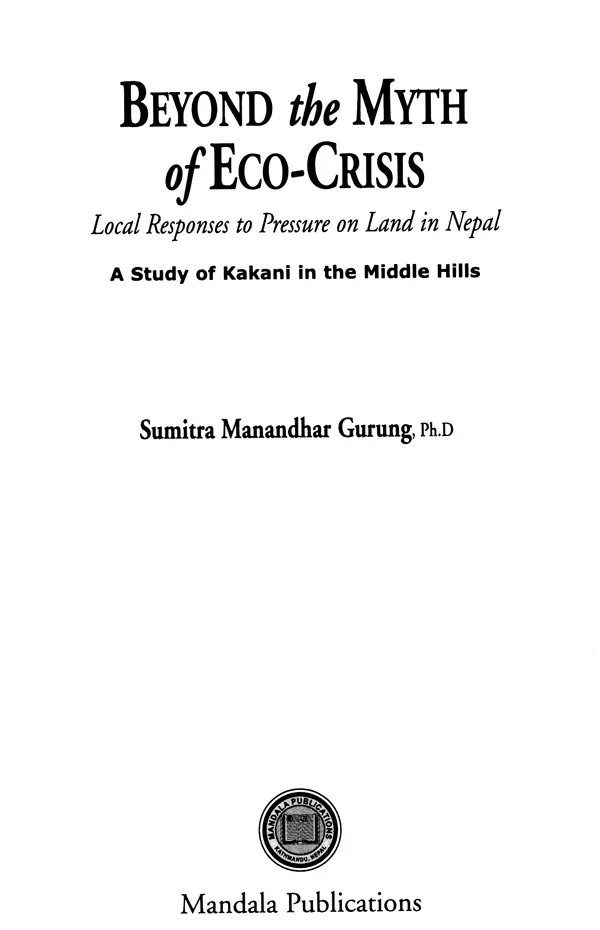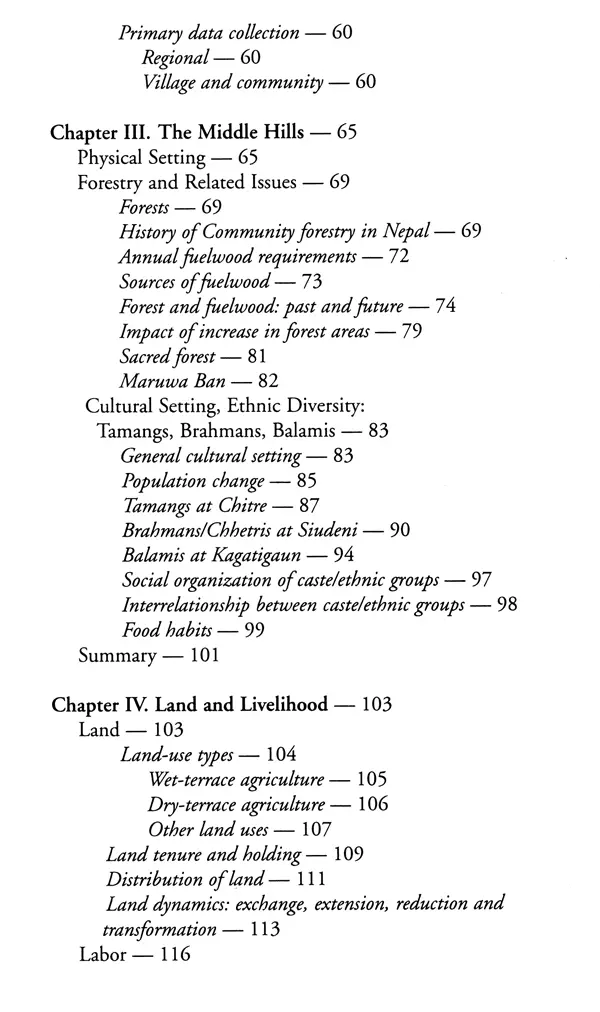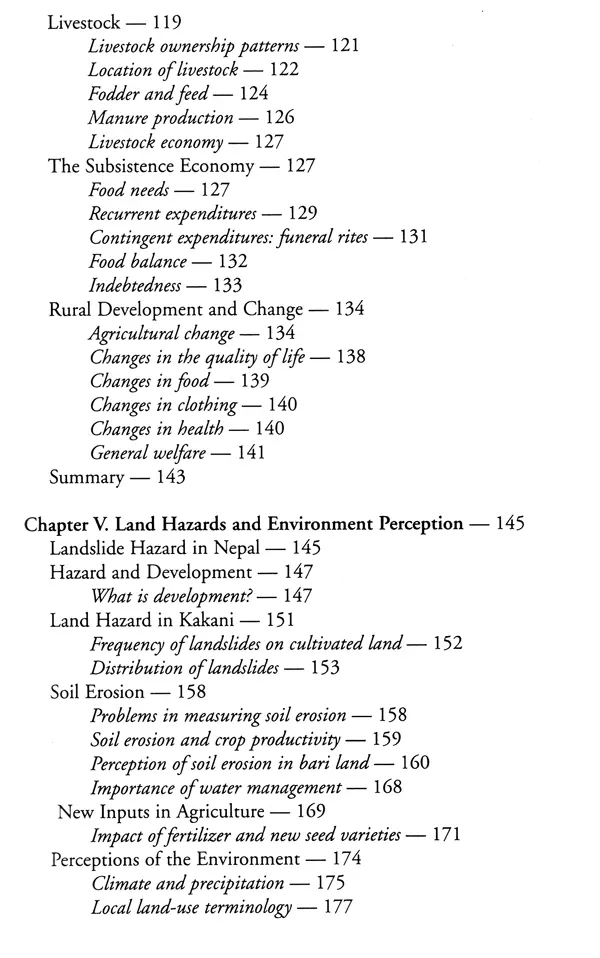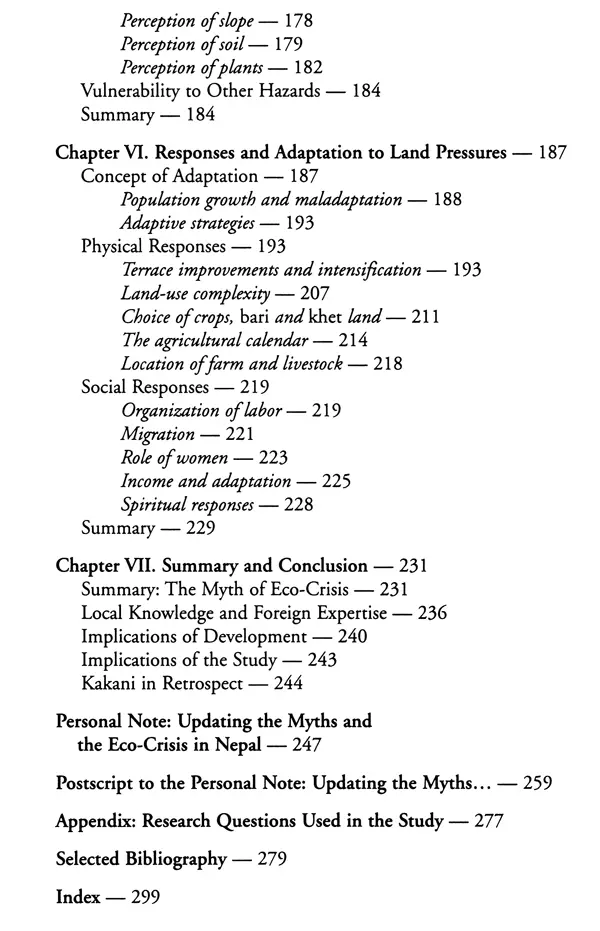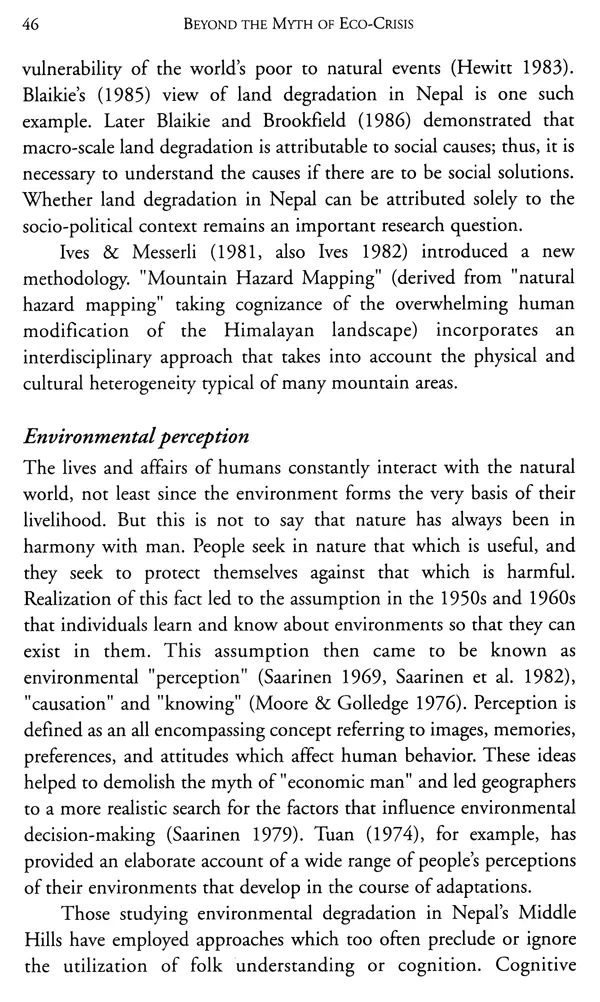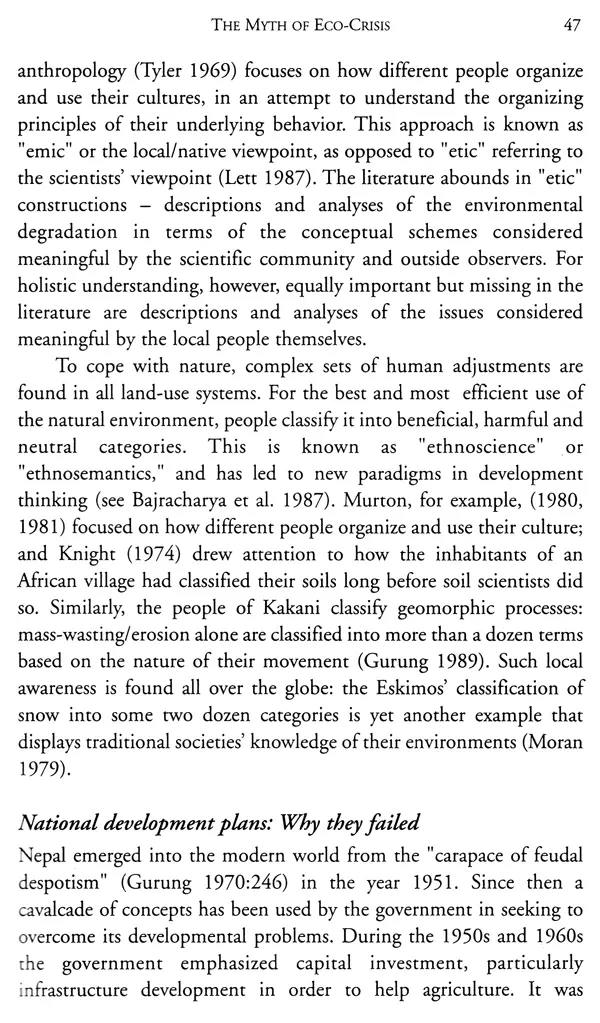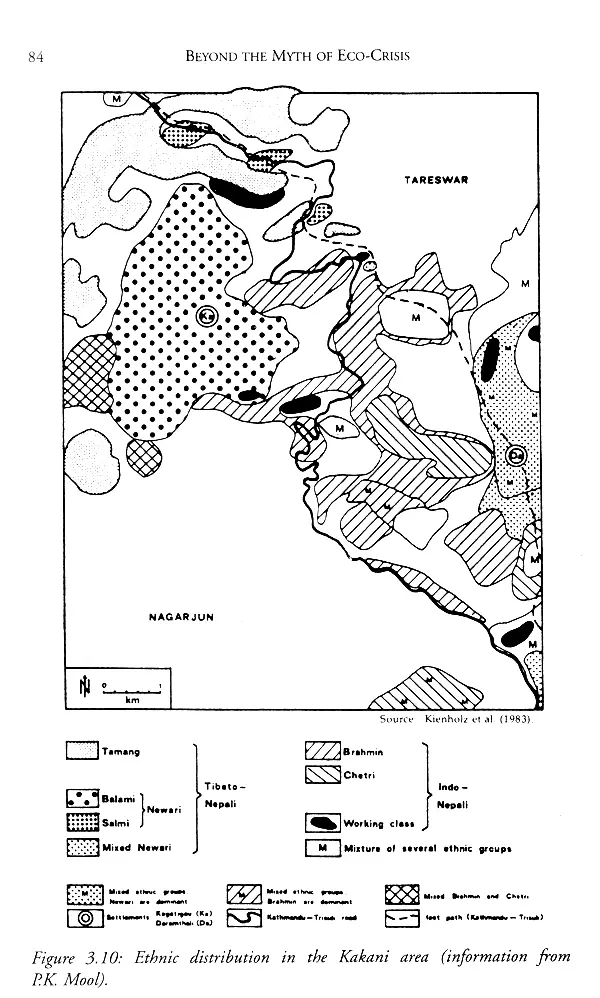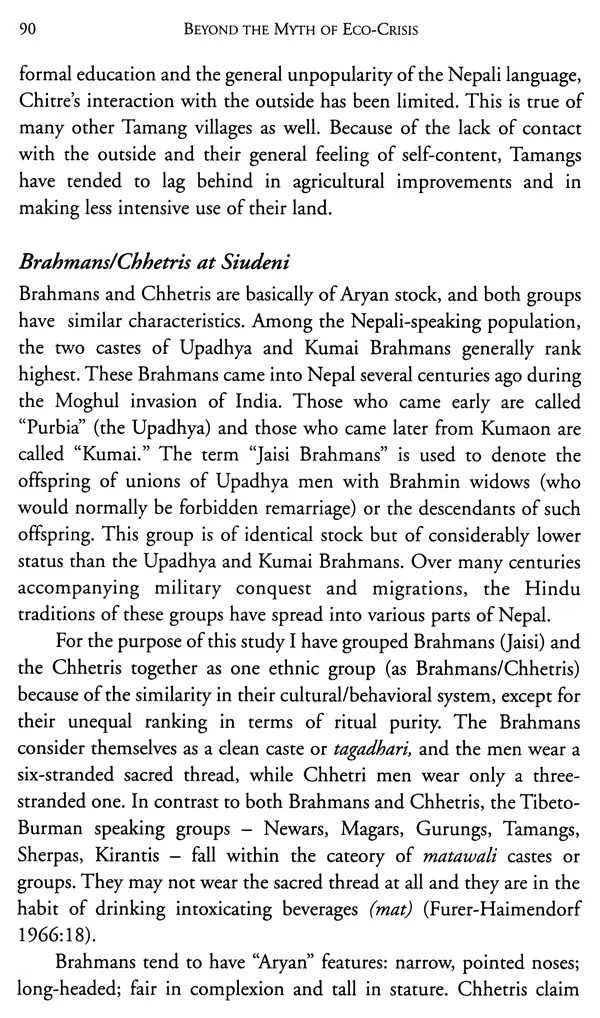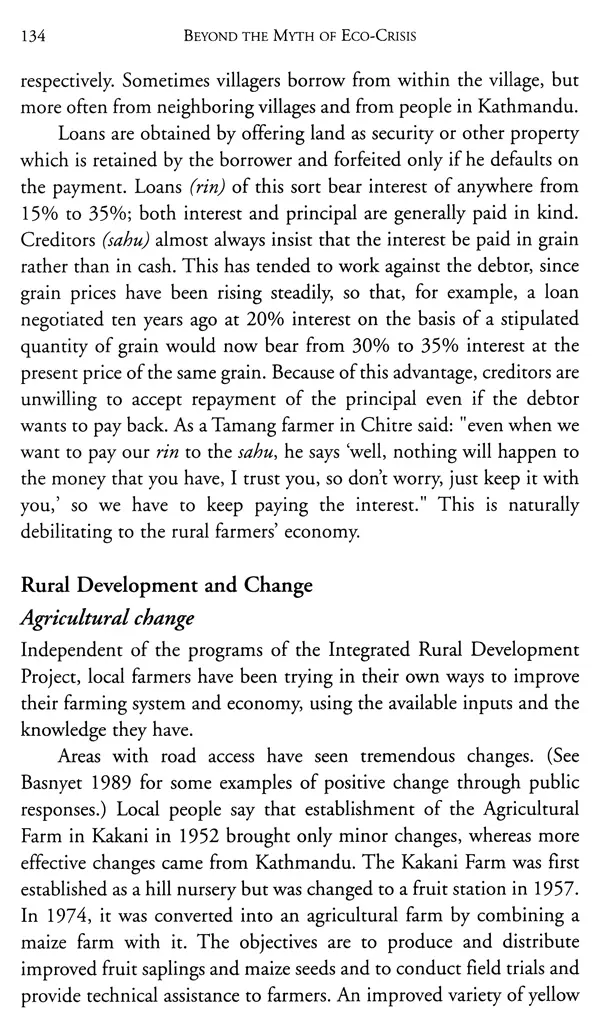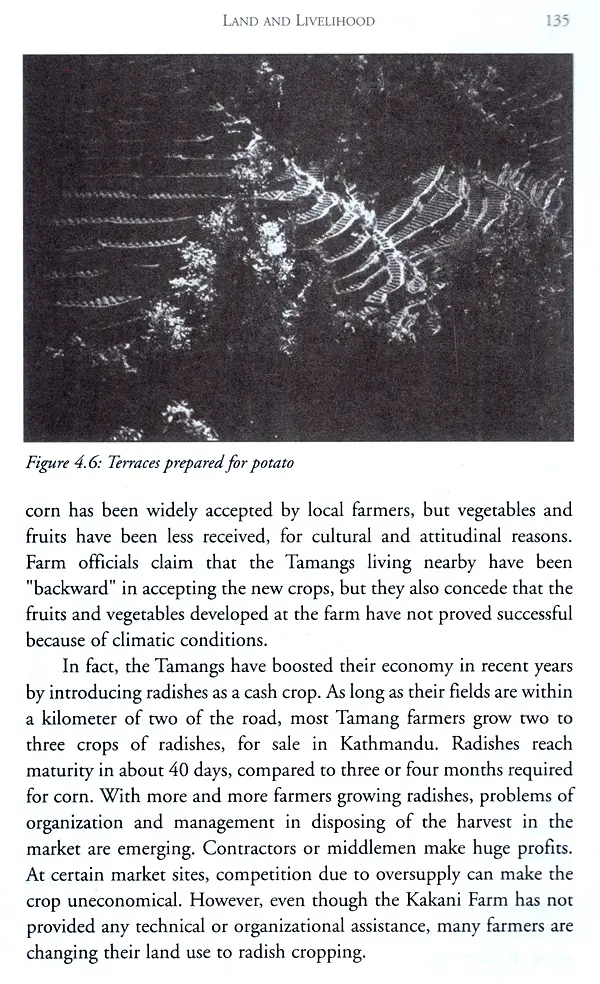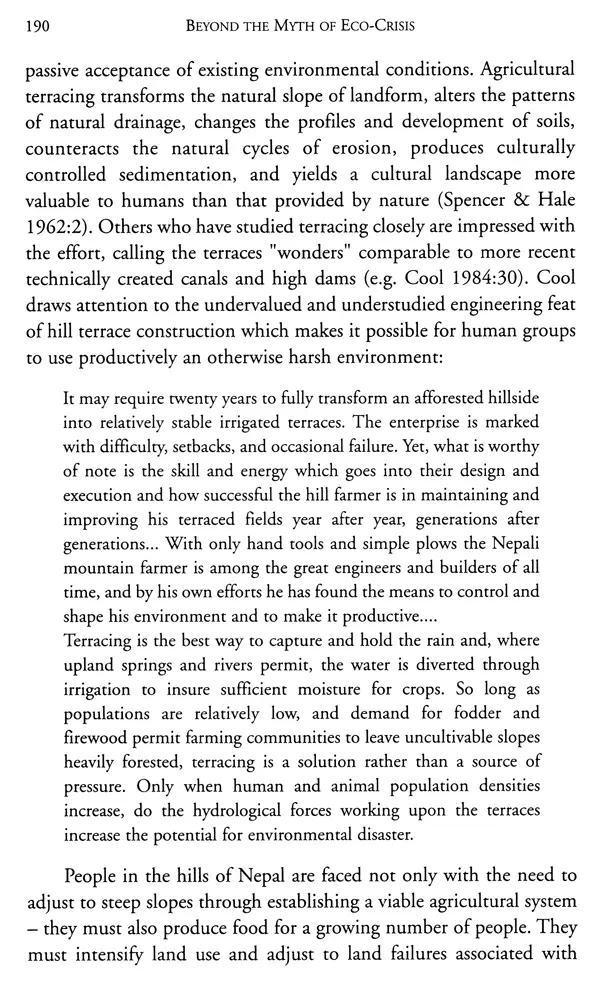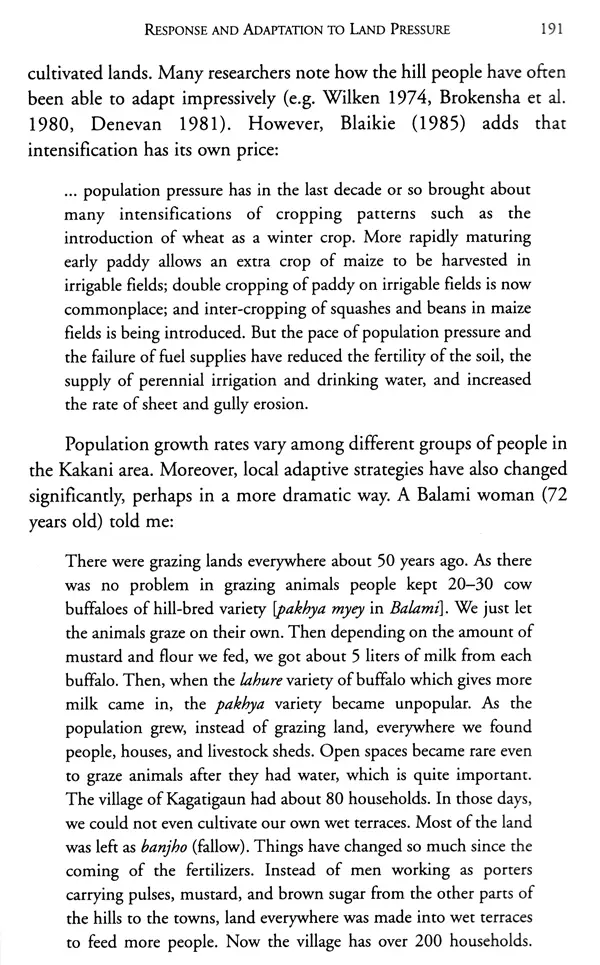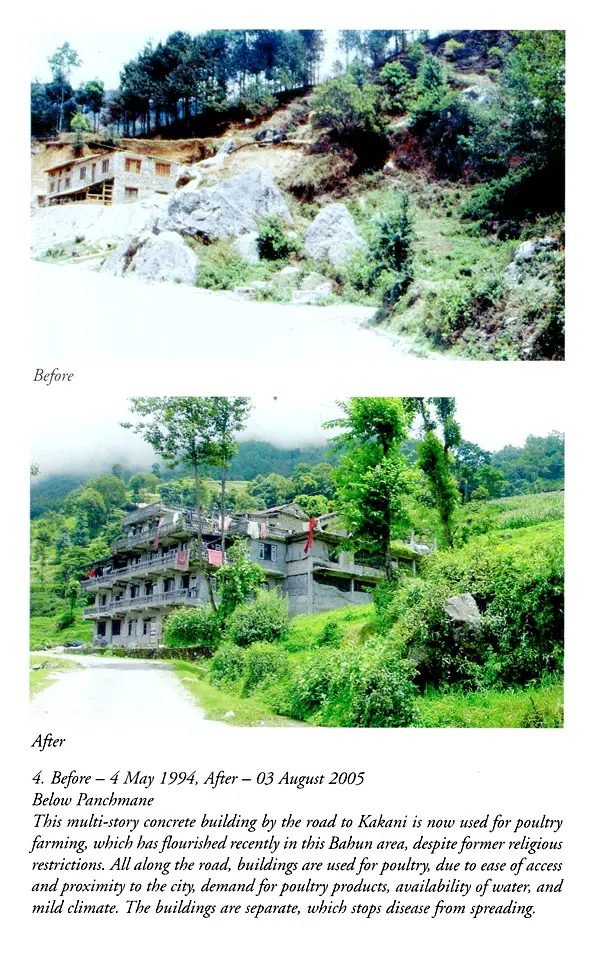
Beyond the Myth of Eco-Crisis: Local Responses to Pressure on Land in Nepal (A Study of Kakani in the Middle Hills)
Book Specification
| Item Code: | UAU126 |
| Author: | Sumitra Manandhar Gurung |
| Publisher: | Mandala Publications |
| Language: | English |
| Edition: | 2007 |
| ISBN: | 9789994655038 |
| Pages: | 310 (Throughout Color Illustrations) |
| Cover: | PAPERBACK |
| Other Details | 8.50 X 5.50 inch |
| Weight | 370 gm |
Book Description
The diverse system of farms in the hills of Nepal has been significantly affected by soil erosion. Foreign ecologists who have studied the problem have concluded that population growth and deforestation have caused substantial land degradation in Nepal, resulting in an "eco-crisis". Manandhar Gurung, a native Nepalese, believes otherwise. She argues that the villagers' cultural background has equipped them with the knowledge to renew and sustain their environment. Using questionnaires and extensive interviews with observations of the cultural habits of three caste and ethnic groups, the author develops and analyzes three sets of data to prove her point. The first set concerns subsistence agriculture and the economy in the context of crop loss due to erosion and flood, the second portrays the local decision-making process about environmental issues, and the third surveys outside intervention on issues of agricultural improvement and efficiency. Manandhar Gurung shows how the villagers are well aware of the relationships involving soil, slope, vegetation, and land use. The many maps, diagrams, pictures, and aerial photographs will be valuable to geographers, anthropologists, and scholars interested in the study of political economy in mountain adaptation. Sumitra Manandhar Gurung is a development activist and an independent development consultant living in Kathmandu, Nepal. Much of her work has appeared in Mountain Research and Development.
Sumitra Manandhar Gurung, a Nepalese geographer, works as a development consultant and a social develop ment activist. She completed her Ph.D. from the University of Hawaii, USA, in 1988. She also studied at the Asian Institute of Technology, Bangkok (1982), University of Colorado, USA (1979) and Tribhuvan University, Nepal, where she did her Masters in Geography (1979). Her main interest lies in improving the lives of poor, disadvantaged women and indigenous peoples and in giving them a voice in the development process. She is currently the Chairperson of Lumanti, Support Group for Shelter, National Coalition Against Racial Discrimination (NCARD), and Founding Board member of Women's Cooperative Society and Banking (WCS), Center for Self-help Development (CSD). She has served as a Board Member of Swabalamban Bikas Bank, Center for Rural Technology, UNESCO's Nepal National Committee for Man and Biosphere (MAB), and also serves as a Trustee of Nepal Vipassana Centre. She has worked as the Project Director of Plan International of Kathmandu and Makwanpur, and as a member of the ICIMOD professional staff in the program Role of Women in Mountain Development.
This book examines the widely-held assumption that land degradation in Nepal is caused by population growth and deforestation and has created an "eco-crisis." Three lines of thought have developed in association with this assumption: (1) there is an increasingly steep downward spiral of environmental degradation (here it should be borne in mind that this study was carried out in the mid-1980s; since then, government and community forestry efforts have disproven this view) (2) the downward spiral has been caused by the bad agricultural practices of hillfarmers; (3) adding to the discourse, to reinforce the idea that there is a pseudo-crisis, is the uncertainty of any evidence.
Does such an alarming situation really exist in the Middle Hills of Nepal? What is happening to the people living in this deteriorating environment? Although natural scientists have made great strides in understanding and explaining the process of accelerated land degradation (see e.g. Bruijnzeel with Bremmer. 1989) and social scientists have tried to theorize about the issue (e.g. Blaikie & Brookfield 1987), such work is far from complete unless we also examine the proposed "eco-crisis" model from the perspectives of the local people themselves. Scientists have been warning that the Himalayan region is destined to experience a super-crisis of unthinkable magnitude unless the subsistence farmers of the region can be better accommodated in political approaches towards access to resources, an approach to "development" that should regard them as part of the solution rather than as part of the problem (Ives & Messerli 1989).
This study is about Kakani, a typical hill area northwest of Kathmandu. In earlier times, this was in fact the only territory outside the Kathmandu Valley that the British Residents were allowed to visit. Most people approach the Kakani area by road from Balaju, in the north of Kathmandu. My introduction to the area was from the reverse direction: at the end of a week-long trek from Lamjung, to attend school in Kathmandu. The uphill climb from the Tadi Khola across Barmandi was a tedious and tiring one, but the view of Kathmandu from Kakani was rewarding. On the way near Chorkatetar (Gorkha), I remember overtaking some men herding buffalo eastwards to Kathmandu. I now realize they could have been Balami of Kagatigaun - men from the periphery of the Valley, linking the economy of the hills with that of metropolitan Kathmandu.
The study area lies on the south slope of the Kaule-Kakani ridge. The three village samples provide typical sites, as an examination of their names indicates. The village of Siudeni (Siudi Euphorbia = royleana) is sub-tropical, as is Kagatigaun (Kagati lemon), while Chitre (chitra = mat made from Arundinaria bamboo) lies in the cooler temperate zone. The aspects of investigation include topography, climate population, land use, rural economy, environmental hazards, adaptive responses, and development reactions.
Dr. Sumitra Manandhar Gurung's fieldwork, observations and dialogue with the villagers reveal a dynamic landscape in a harsh environment. Her conclusions expose the fallacy of overt generalizations regarding eco-crisis in the Himalayan region.
Book's Contents and Sample Pages
